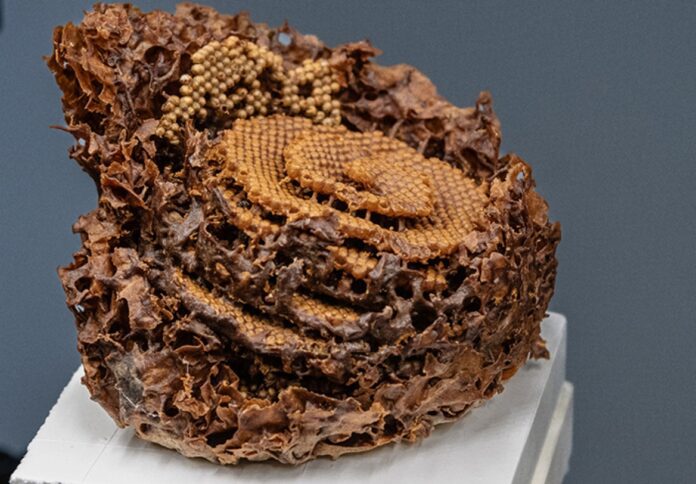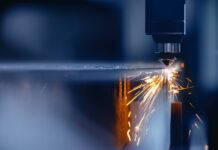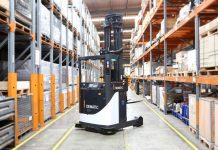
Researchers at Purdue University are drawing inspiration from the unique honeycomb structures of Australian stingless bees to explore new possibilities in sustainable additive manufacturing.
Unlike traditional honeycombs with vertical formations, these bees create spiral-shaped discs that ascend like ramps, with precisely positioned supports that strengthen their wax-based structures, researchers said in a university news release.
Professor Nikhilesh Chawla, an expert in four-dimensional materials science and Purdue’s Ransburg Professor in Materials Engineering, highlighted the significance of the bees’ structural innovations.
“What is amazing about this is they actually make vertical pillars creating structural support between the discs,” Chawla explained.
“The bees recycle the comb materials and use a spiral construction to efficiently build and maintain temperature stability in the comb. We can learn so much from their intelligent and multifunctional approaches to manufacturing.”
The bees’ supports, while not fully solid, are strategically placed to allow repairs when needed, reflecting a balance of strength and adaptability.
Chawla’s research delves into biomimicry, a field that examines natural systems and structures for innovative applications in human engineering and manufacturing.
According to the research, Australian stingless bees constantly build and dismantle sections of their hives.
As eggs hatch in the lower layers, those cells are torn down, making way for new construction in an upward spiral.
This continuous reconfiguration could inspire dynamic and reconfigurable designs in human-engineered systems.
Using advanced 4D imaging technology, Chawla and his team are studying hives brought from Australia.
This non-invasive technique combines three-dimensional X-ray microscopy with time-lapse imaging, providing an unprecedented view of the honeycomb’s microstructure and material composition.
Graduate student Nicole Balog, working with Chawla, noted the material complexity of these honeycombs.
“There’s a lot of questions that we have with the resin, like how much are they adding to the wax, and do they change the amount that they’re adding based on the location of the hive, the time of year, and other factors?” Balog said.
This research extends Chawla’s previous studies on honeycombs in the US, which revealed material-efficient porous junctions between cells.


















